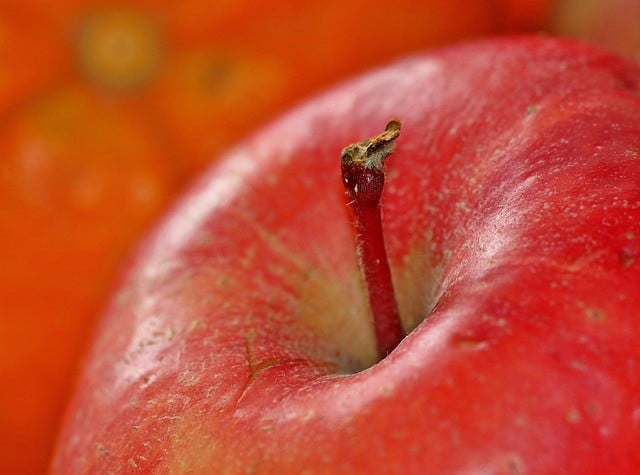I just ate an apple that had 116,000 calories.
No, it wasn’t the size of my house. That’s really how many calories a large apple contains.
As calorie, as you might remember from high school, is the amount of energy it takes to increase the temperature of 1 gram of water by 1 degree Celsius. Turns out that an apple contains quite a bit of energy–enough to raise the temperature of 116,000 grams (or about 30 gallons) of water by 1 degree Celsius.
When we talk about calories in food, we’re actually referring to kilocalories. In fact, you will sometimes see the abbreviation kcal. There’s an obscure rule saying that you should capitalize the first letter of the word Calorie to signal that you’re talking about “food calories” or kcals. But no-one actually does this.
In a scientific lab, 1 calorie = 1/1000th of a kilocalorie
In the real world, however, 1 (food) calorie = 1,000 (scientific) calories = 1 kilocalorie (kcal)
But wait: There’s more.
Outside the U.S., the energy in foods is sometimes expressed in kilojoules. A joule is (are you ready for this?) “the unit of energy equal to the work done by a force of one newton when its point of application moves one meter in the direction of action of the force, equivalent to one 3600th of a watt-hour.”
I have no idea what that means. Literally, none.
But I do know this: A calorie is about 4 joules. The 116 kcal apple that I just ate contained 484 kjoules worth of energy. So, if you ever see a label that lists the energy in a food in kilojoules(kJ), divide by 4 to get the approximate Calorie (kcal) count.


I had no idea what kilojoules meant too! Good info on how to calculate a calorie correctly.
3) Cosmopolitanism. It’s a lot harder to come up with the consensus that’s needed to rebuild the identity when a lot of thought-leaders have left to join something they view as greater and grander.
replique prix bague bulgari b zero http://www.aluxury.nl/fr/